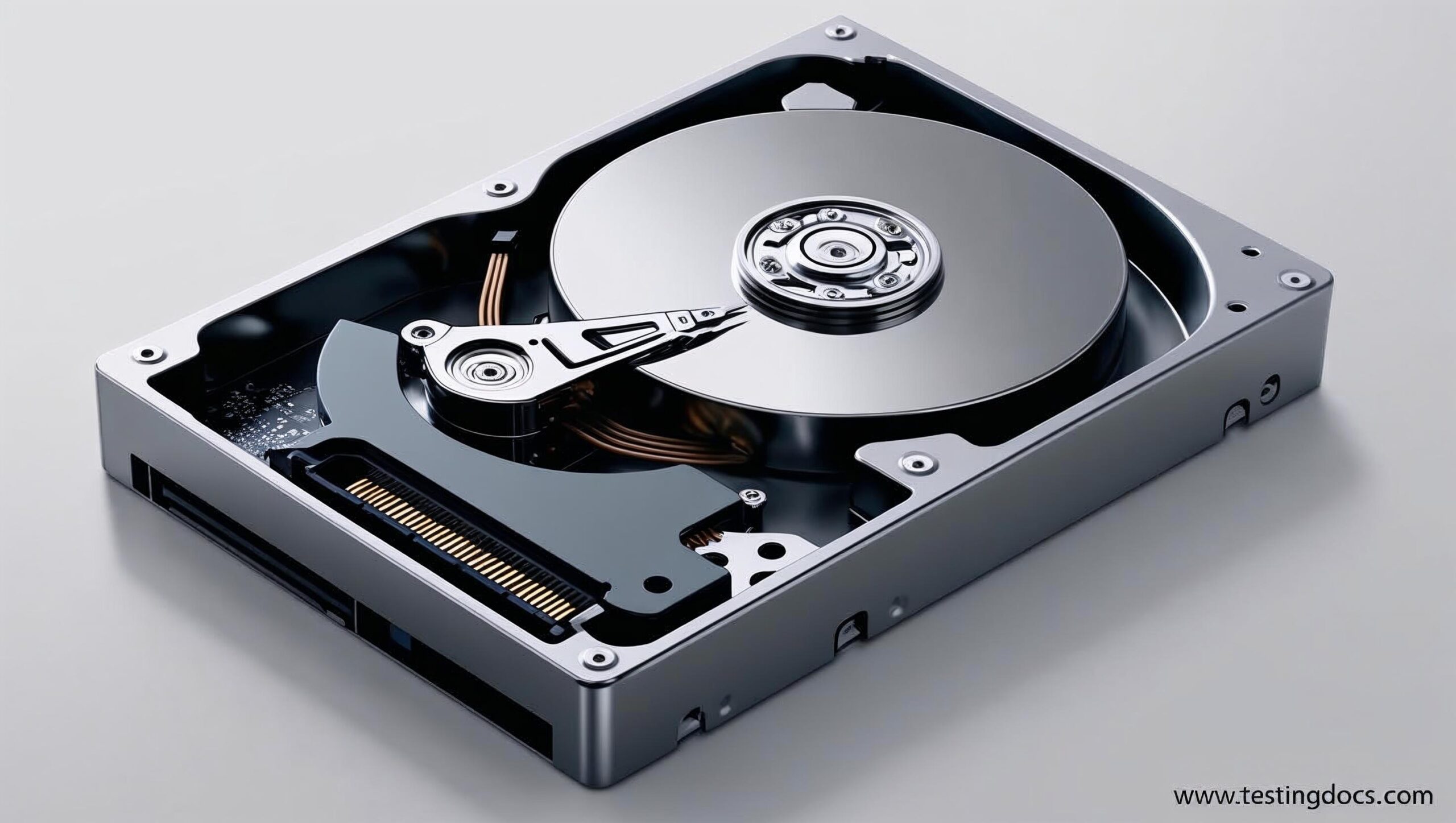Hard Disk Drive (HDD)
Hard Disk Drive
The Hard Disk Drive ( HDD) is one of the most essential components of a computer. It is where all your data—like files, applications, music, videos, and even your operating system—is stored. Whether you are browsing the internet, saving a photo, or installing software, the HDD plays a vital role in making it all possible. This article will introduce you to the basics of HDDs, explain their key functions, and explore some of the common types used in computers today.
- A Hard Disk Drive is a non-volatile storage device that stores digital data permanently.
- It uses spinning magnetic disks (called platters) to read and write data.
- Data is accessed using a mechanical arm with a read/write head that moves over the platters.
- HDDs retain information even when the computer is turned off.
- They have been widely used in desktops, laptops, servers, and data centers.

Functions of Hard Disk Drive
The key functions of hard disks are as follows:
- Data Storage: HDDs store operating systems, software, and personal files like documents, images, and videos.
- Booting the System: The operating system is loaded from the HDD during startup, making it essential for booting the computer.
- Program Execution: Software and applications are loaded from the HDD into memory (RAM) to be executed.
- Backup and Archival: HDDs can store backup copies of important data for future use or recovery.
SATA (Serial ATA)
Hard Disk Drives come in different types based on their interface and connection method. One of the most common types is the SATA HDD.
- SATA stands for Serial Advanced Technology Attachment.
- It is a widely used interface for connecting HDDs to a computer’s motherboard.
- SATA drives are known for their high storage capacity and affordable cost.
- They are slower than newer technologies like SSDs but are still popular for bulk storage.
- SATA HDDs are commonly found in both desktop and laptop computers.
Solid State Drives
Video Tutorial


